Raised vegetable gardening
Table of Contents
:ID: d9d045d0-8598-4e5f-be7e-f61312460d3d
# First attempt 2023-04-01
We’ve never done vegetable gardening. Now that we’re living that country life in the Southeast US, we figured we’d give it a try. After reading blog posts (like this one) and videos on YouTube (like this one), we decided on DIY soil since it would be cheaper than buying “premium” raised gardening soil at over $10/bag. We did go a little off script, with our soil mix, mostly to keep cost down further, but figured we captured the spirit of the conventional wisdom of DIY soil mixing.
# The soil mix
We have one 4’ x 8’ raised bed.
FYI mixing soil is hard work.
# Ingredients
- Around 3 ft3 of compost composed of mostly leaves and some food waste. This wasn’t very well decomposed yet.
- 4 1/2 ft3 of Scott’s Topsoil (contains sphagnum peat moss and organic matter)
- 6 ft3 of American Countryside Topsoil (consists of composted bark, forest products and sand)
- 3 ft3 of Peat moss. This helps with water and nutrient retention, but is acidic so don’t use too much.
- 3 ft3 of Black Kow. Contains cow manure. It helps to increase nutrient content.
- 24 Qt of perlite. This supports aeration and drainage. Prevents soil compaction so plants to take root easily.
- 1 1/2 cups of Dr. Earth Pure Gold All Purpose Fertilizer.
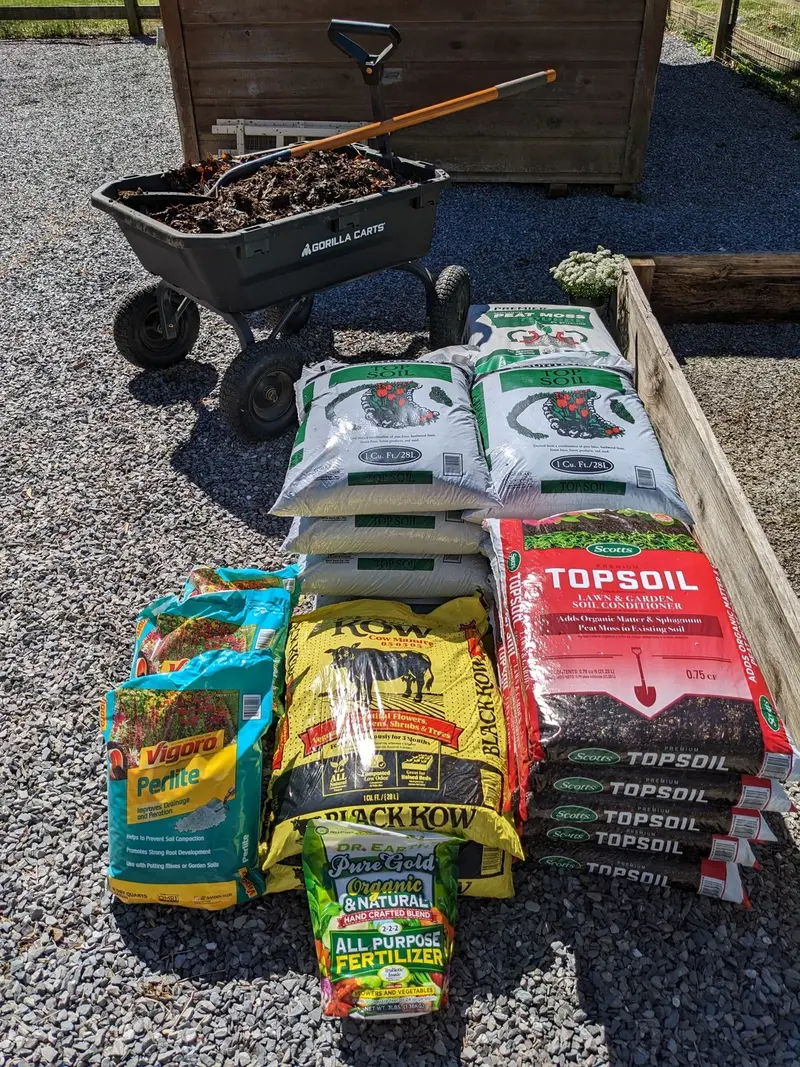
- Soil ecosystem
The fundamental aim is to create soil where organic matter is converted though natural processes into nitrogen, phosphorous and potassium which are in turn ingested by the plants. Organic matter is converted into these elements in a couple of ways:
- Bacteria, through extracellular digestion. That is they digest the organic matter outside the cell wall, then consume it. This process converts organic matter into the above elements. These bacteria are brought into the soil mixture with manure and compost.
- Larger organisms, like insects and worms consume organic matter. It is their waste products that feed plants. For example, worm castings (their poop) is like concentrated nitrogen, phosphorous and potassium. These soil organisms are brought into the soil ecosystem via compost.
Plants consume nitrogen through water absorption, which is why we want aeration. Plants consume phosphorous and potassium through roots in contact with the soil.
# Start with the compost
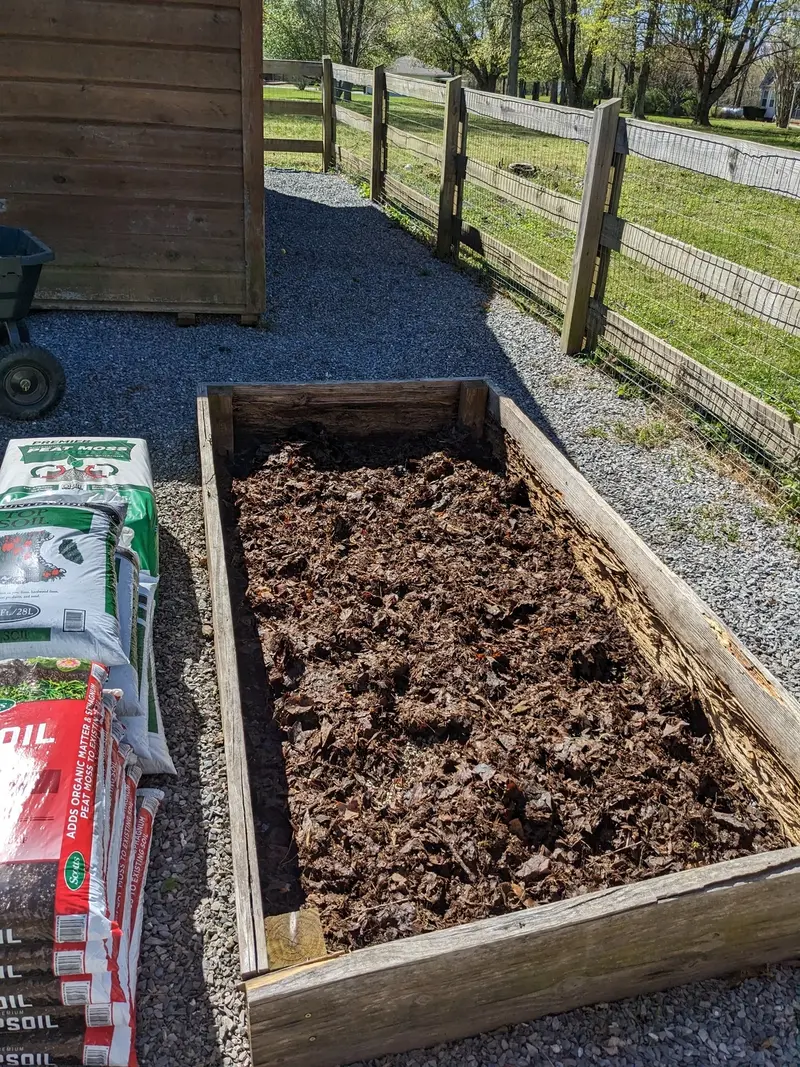
# Mix in peat moss
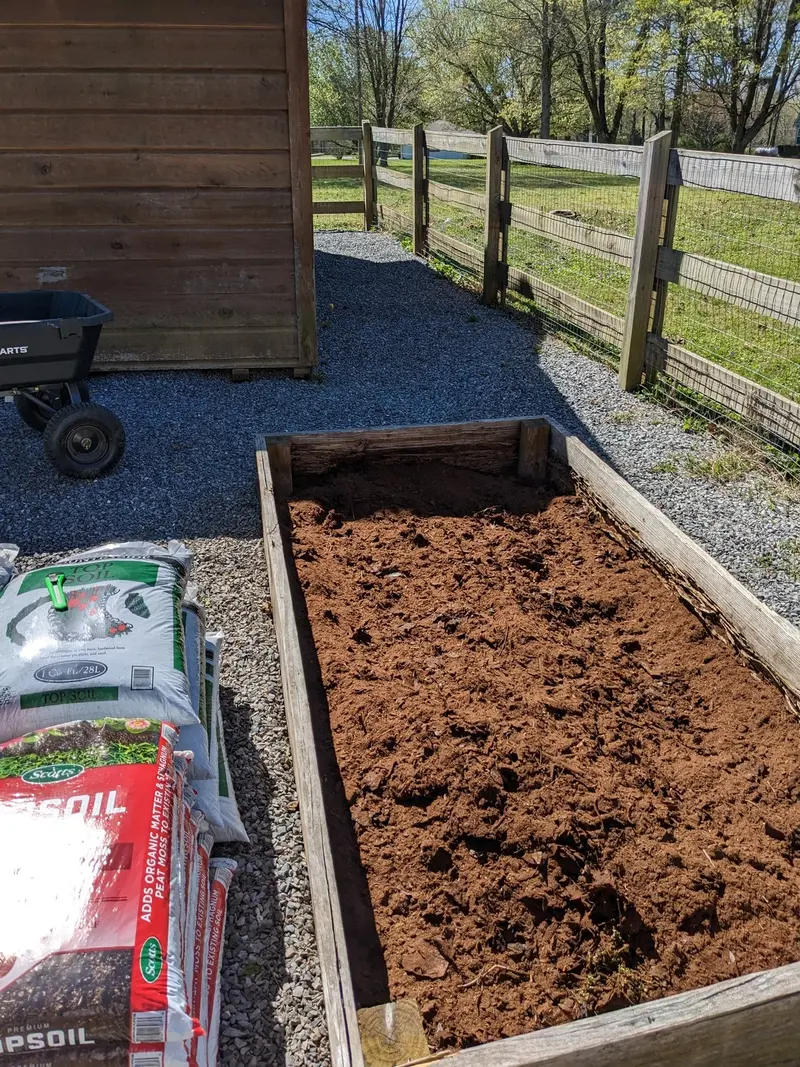
# Mix in the Scott’s topsoil
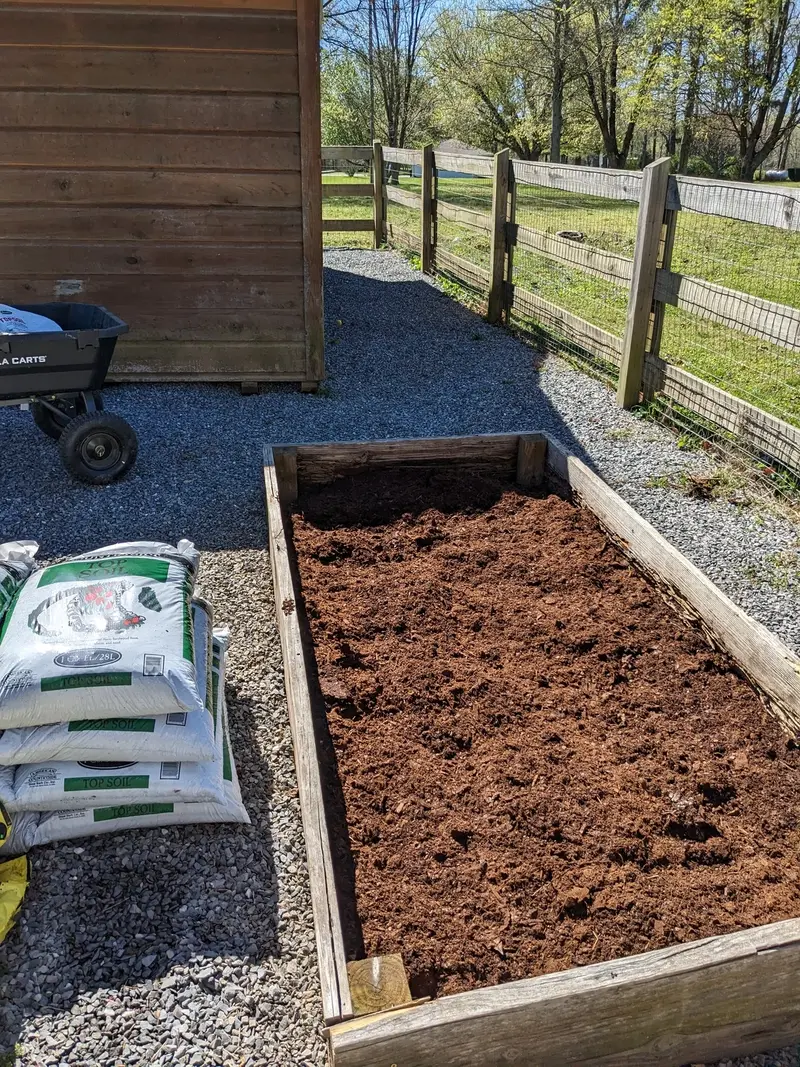
# Mix in the perlite
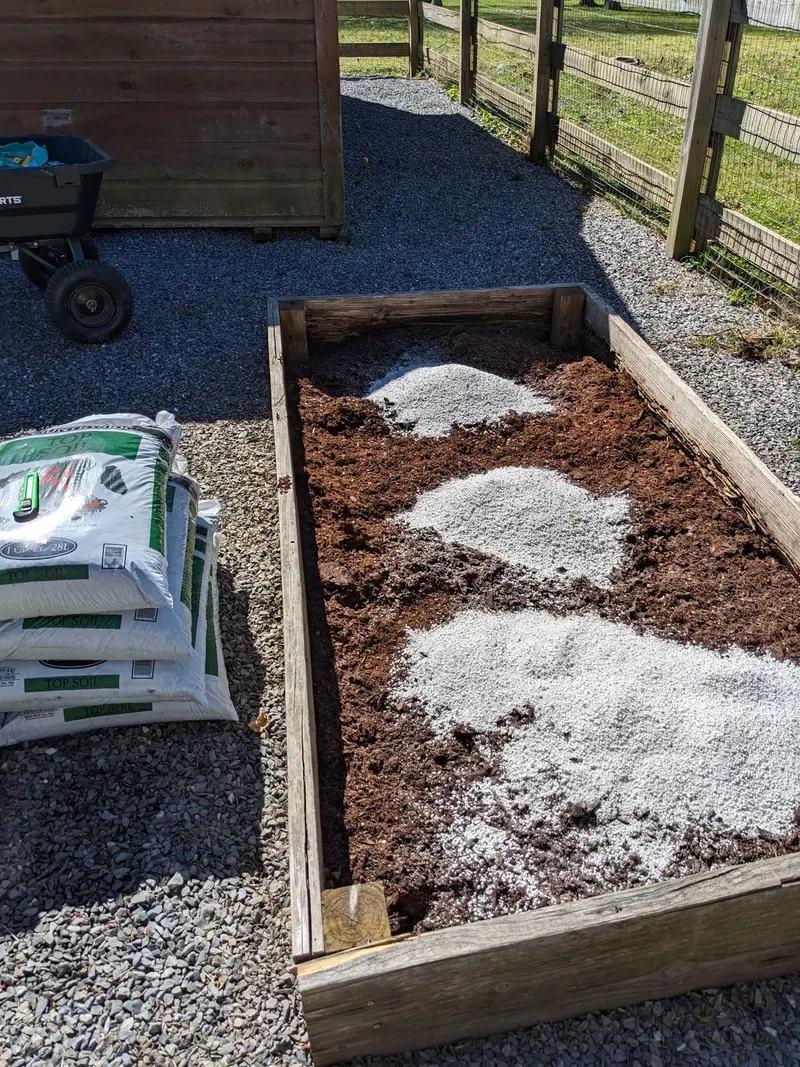
# Mix in the manure
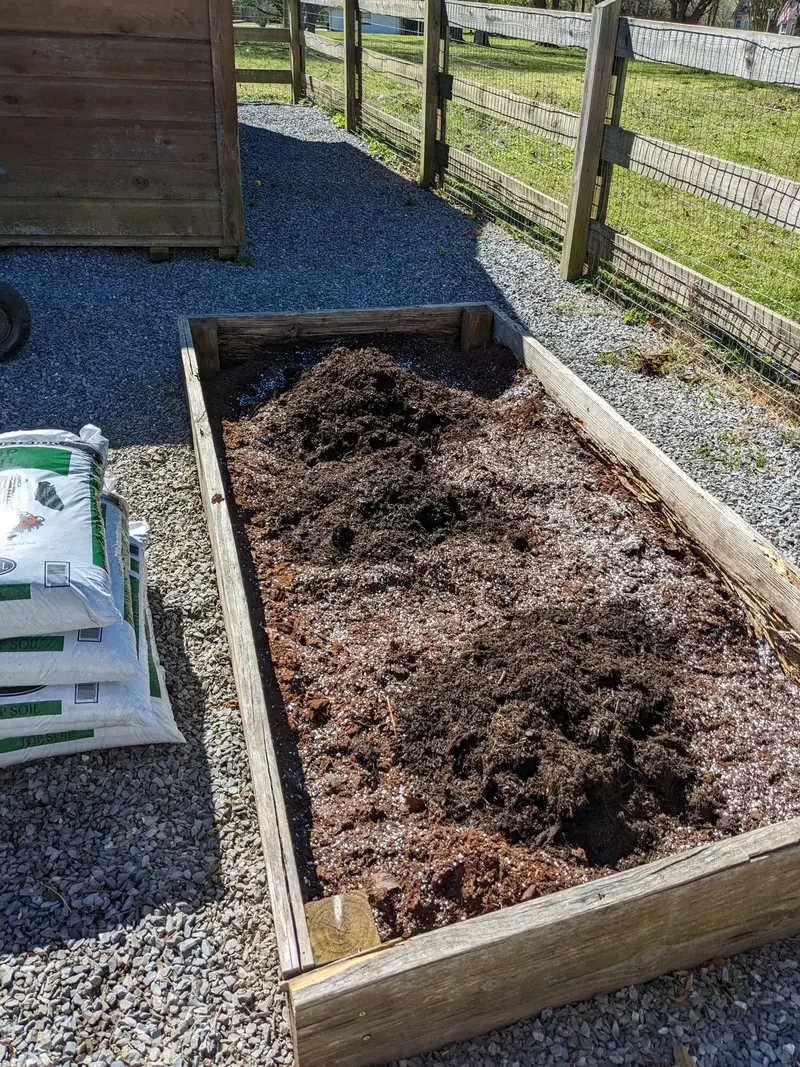
# Mix in the fertilizer
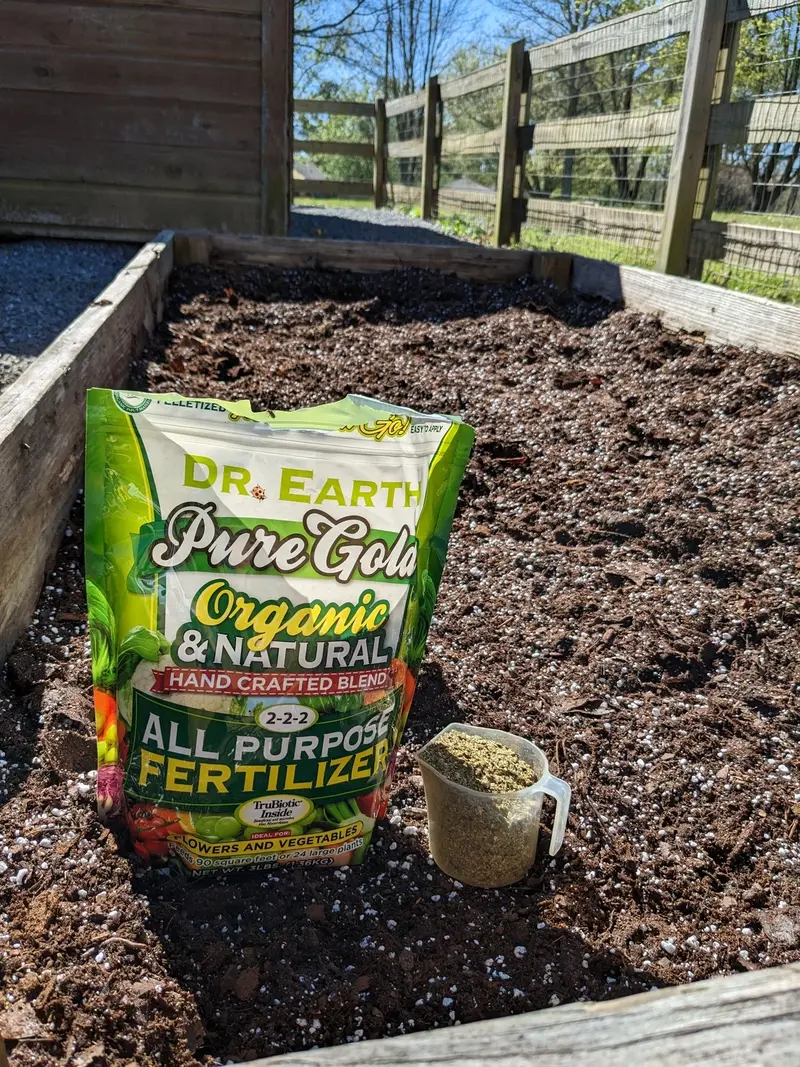
# Mix in remaining topsoil
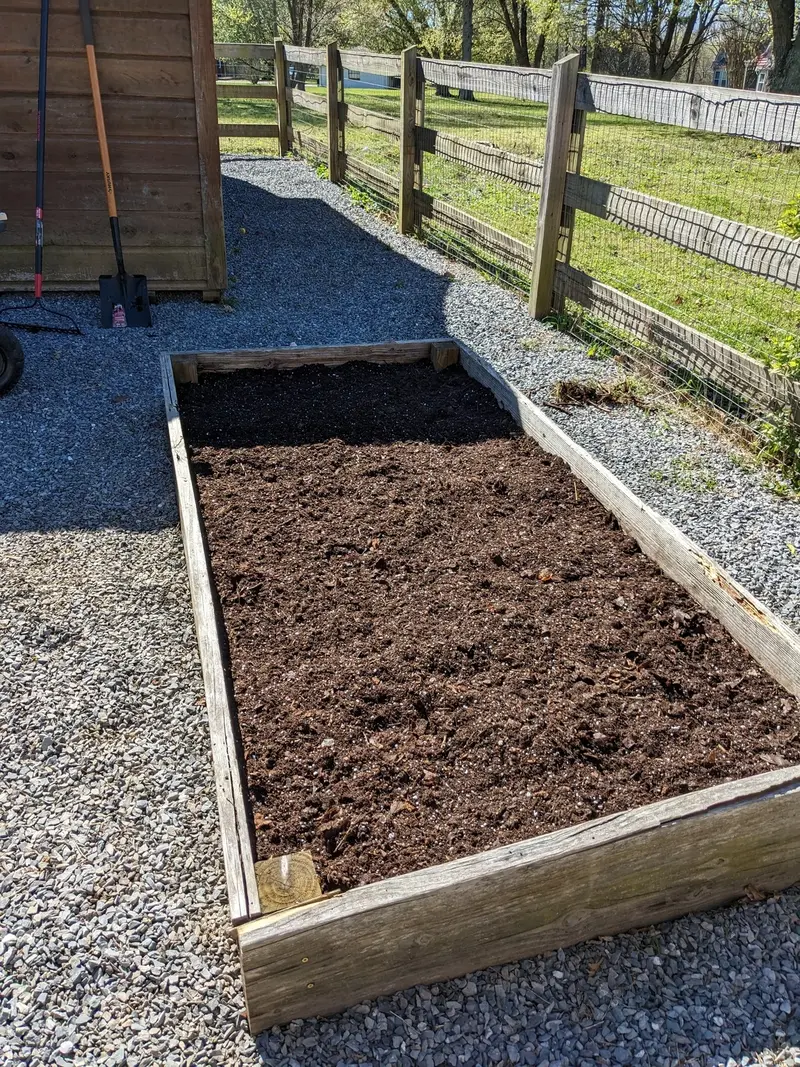
# What we planted
# From seed
- Gladstone onions (4/1/23)
- Tenderweet carrots (4/1/23)
- Beefsteak tomatoes (4/1/23)
- Basil (4/1/23)
- Catnip (4/1/23)
- Zucchini (4/15/23)
- Squash (4/15/23)
- Rosemary (4/15/23)
- Lavender (May)
- Muhly Grass (May)
- Columbine (May - none of them germinated)
# Planted
These went into separate pots, just documenting here temporarilly.
- Snowsurfer Forte Candytuft (an early spring perennial flower)
- Arizona Sun Gaillardia
# 2023-04-10
This is perhaps our first tomato
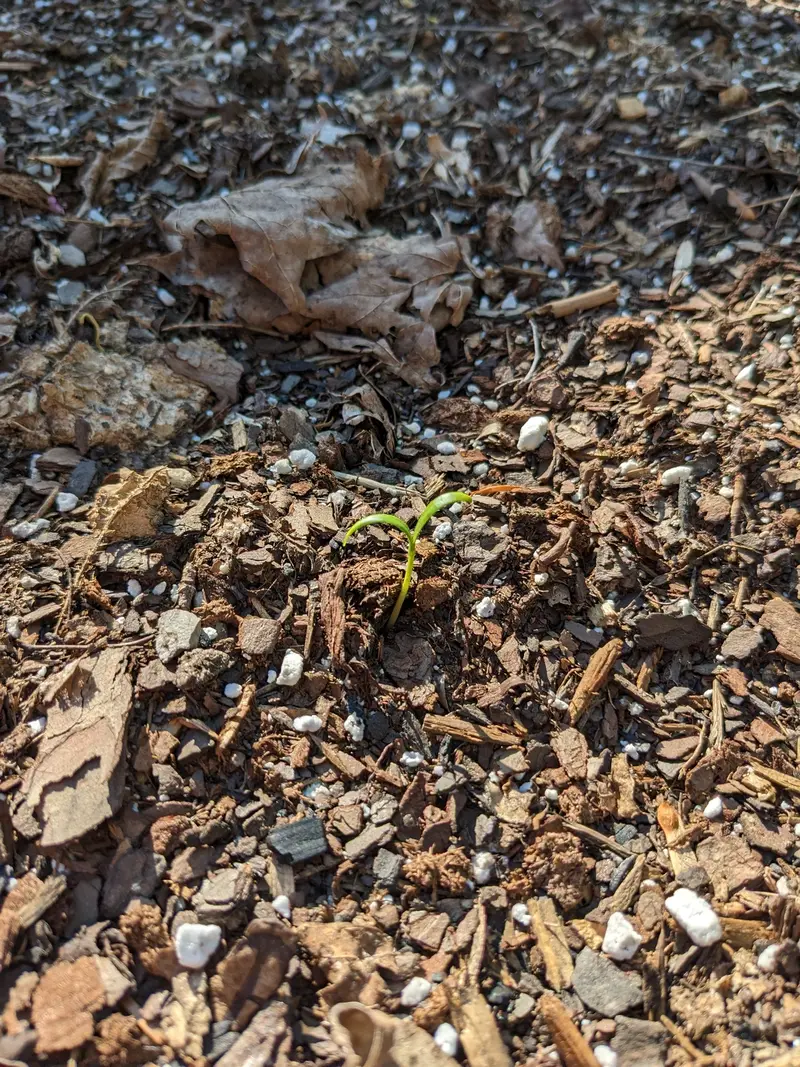
# 2023-04-15
There are many seedlings, but we can’t tell what is what yet. Do we have tomotoes or a bunch of weeds?
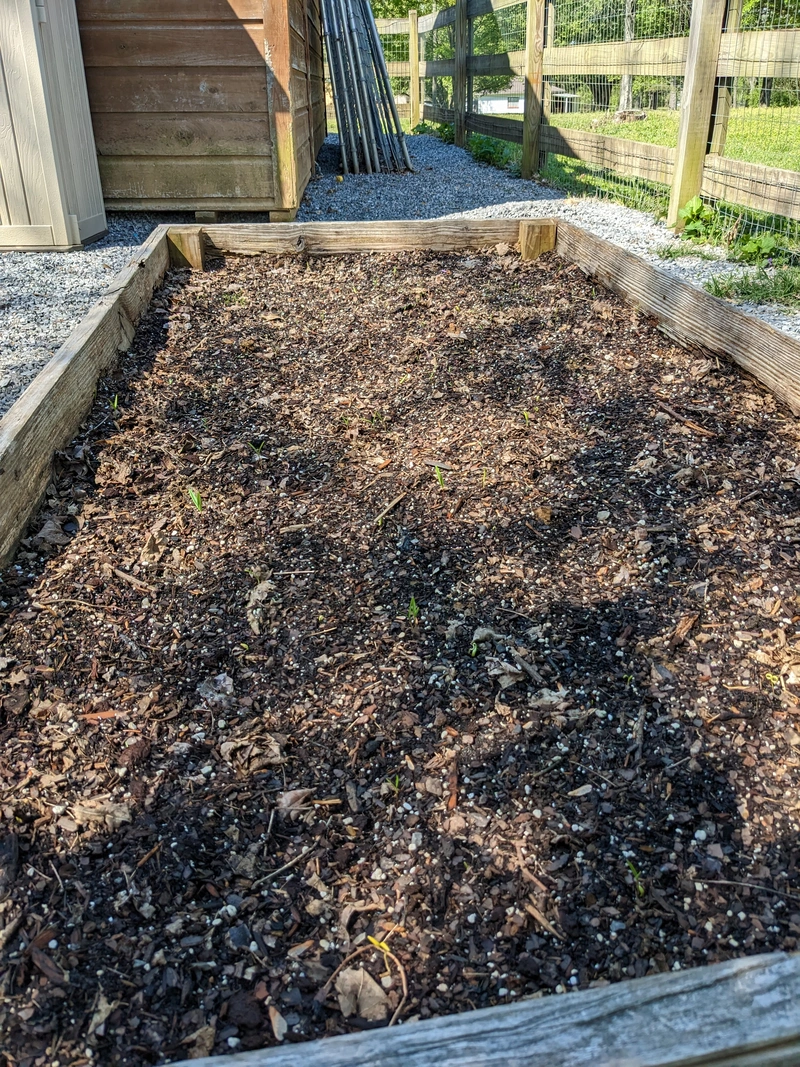
These might be the carrots.
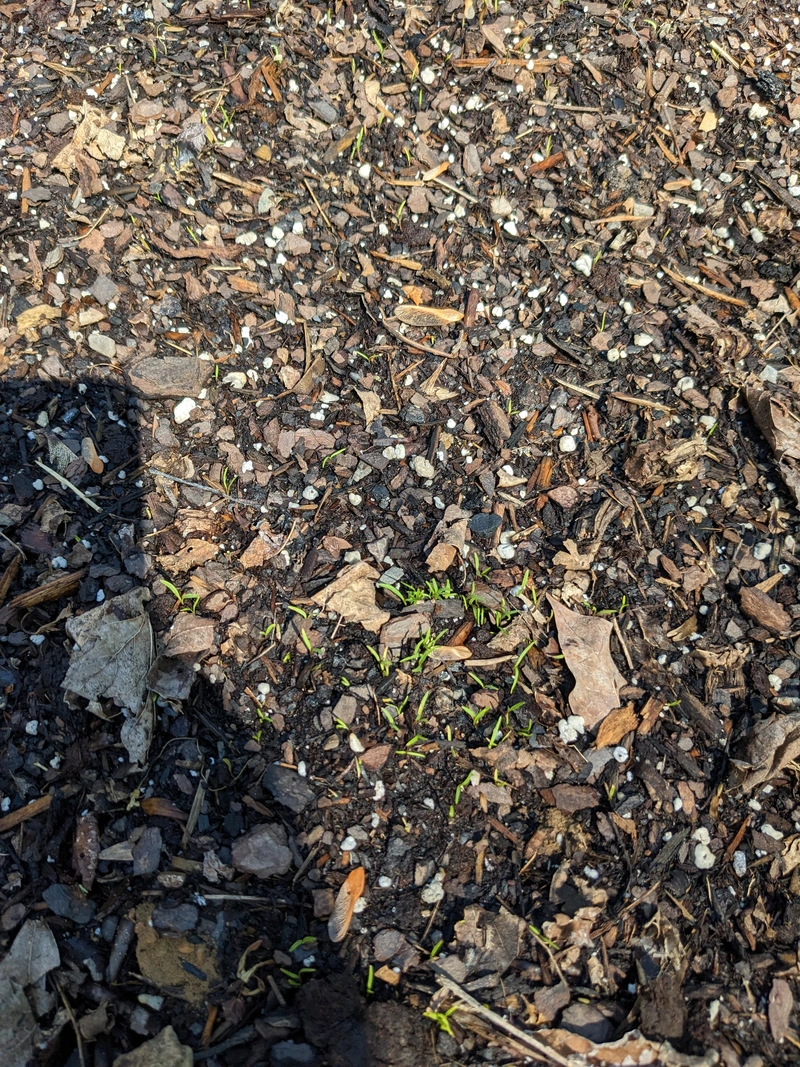
# 2023-05-20
The zuchinni and squash were planted later than the others, but are growing the fastest.
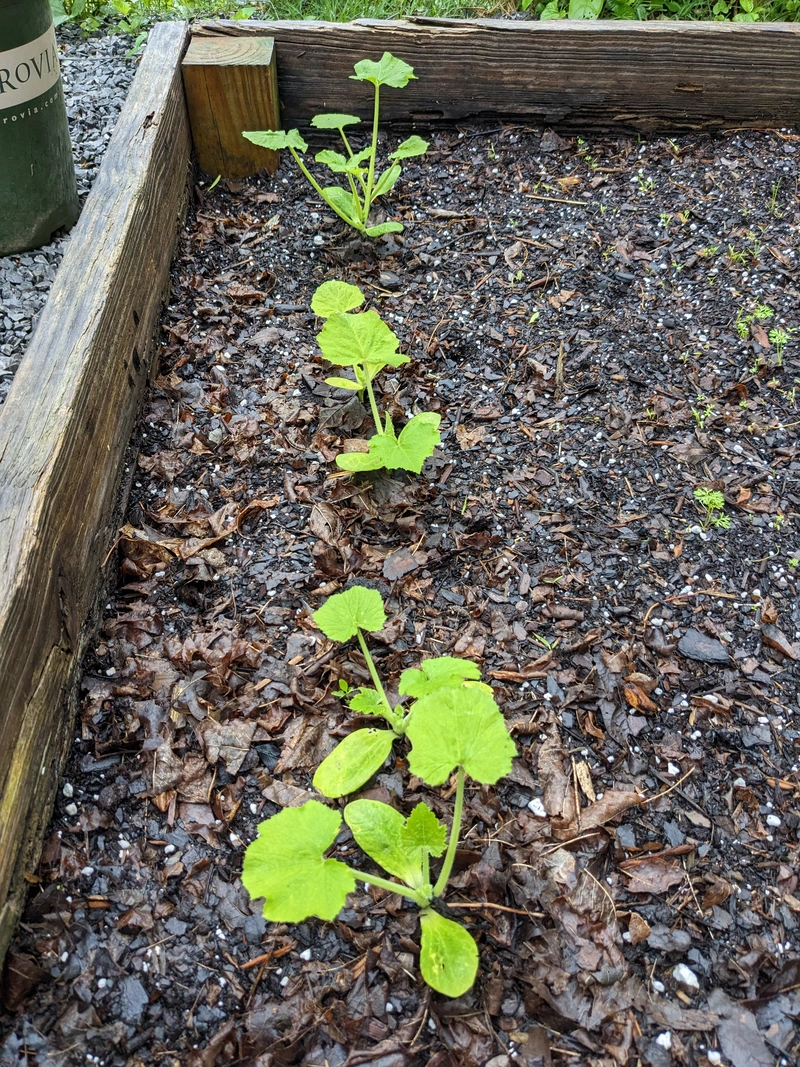
The carrots are starting to look like carrot stalks.
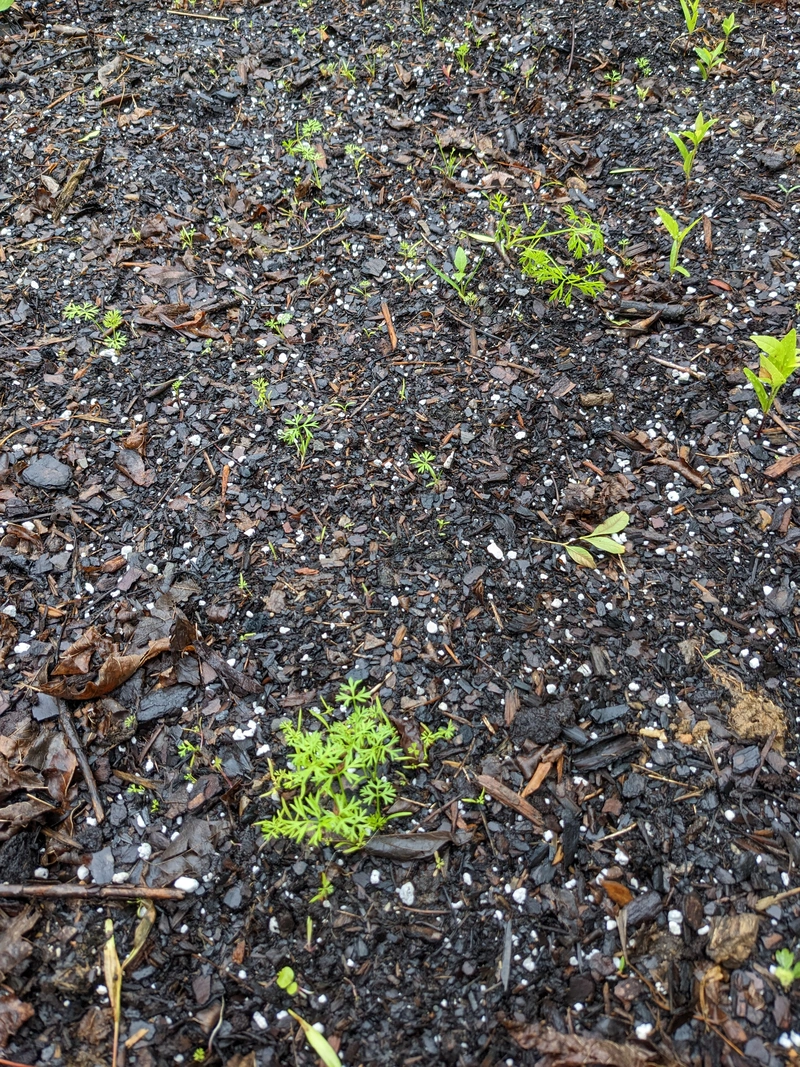
Tomatoes take a long time; they still have a long way to go. Same with the onions. Most of what is pictured here aren’t tomatoes.
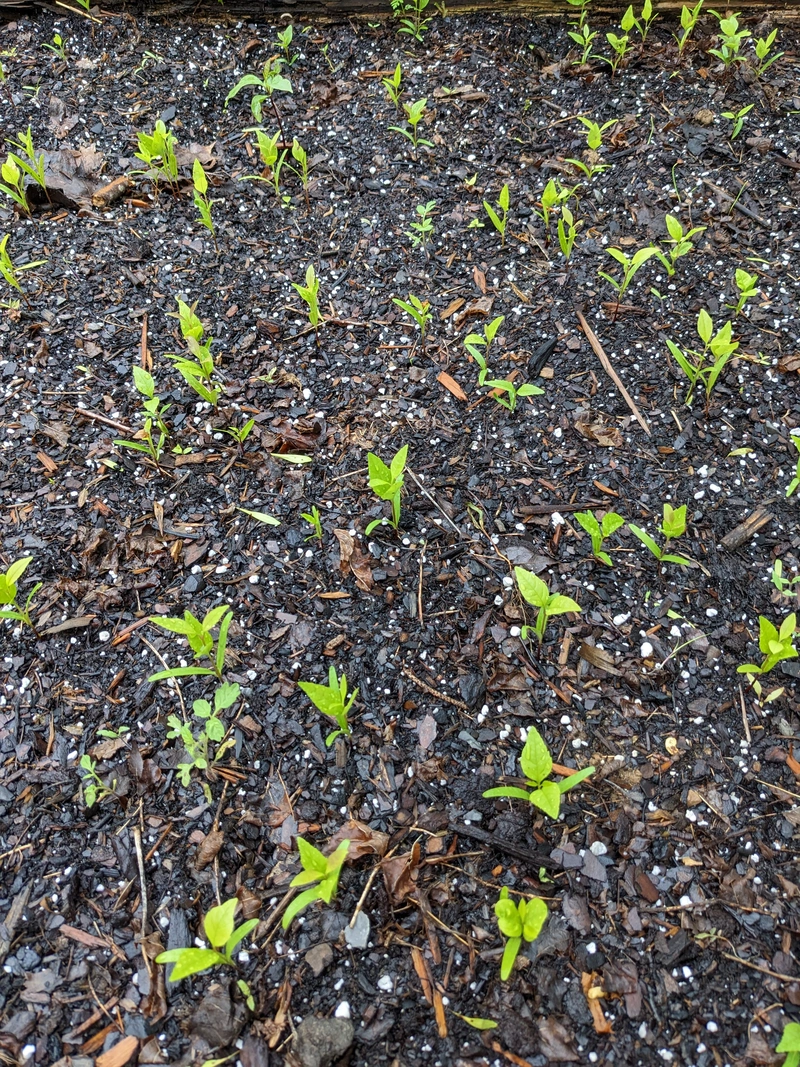
# 2023-06-04
Tomatoes are entering the vegitative stage.
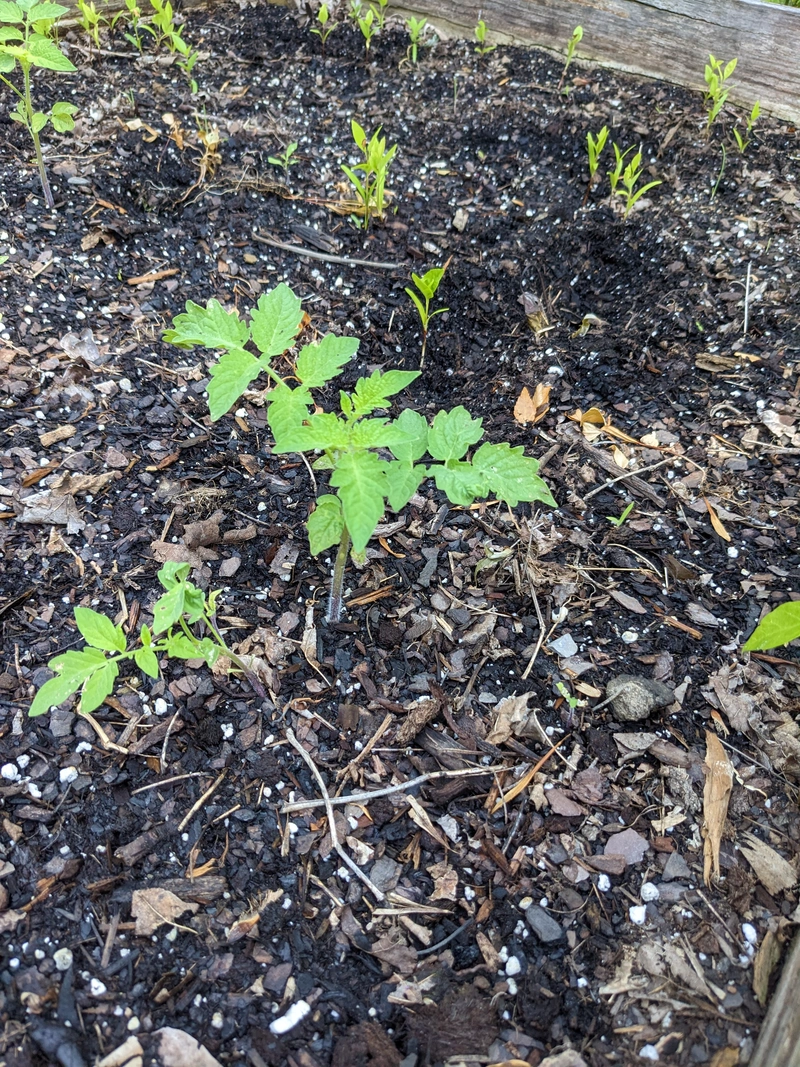
Carrot stalks are getting taller
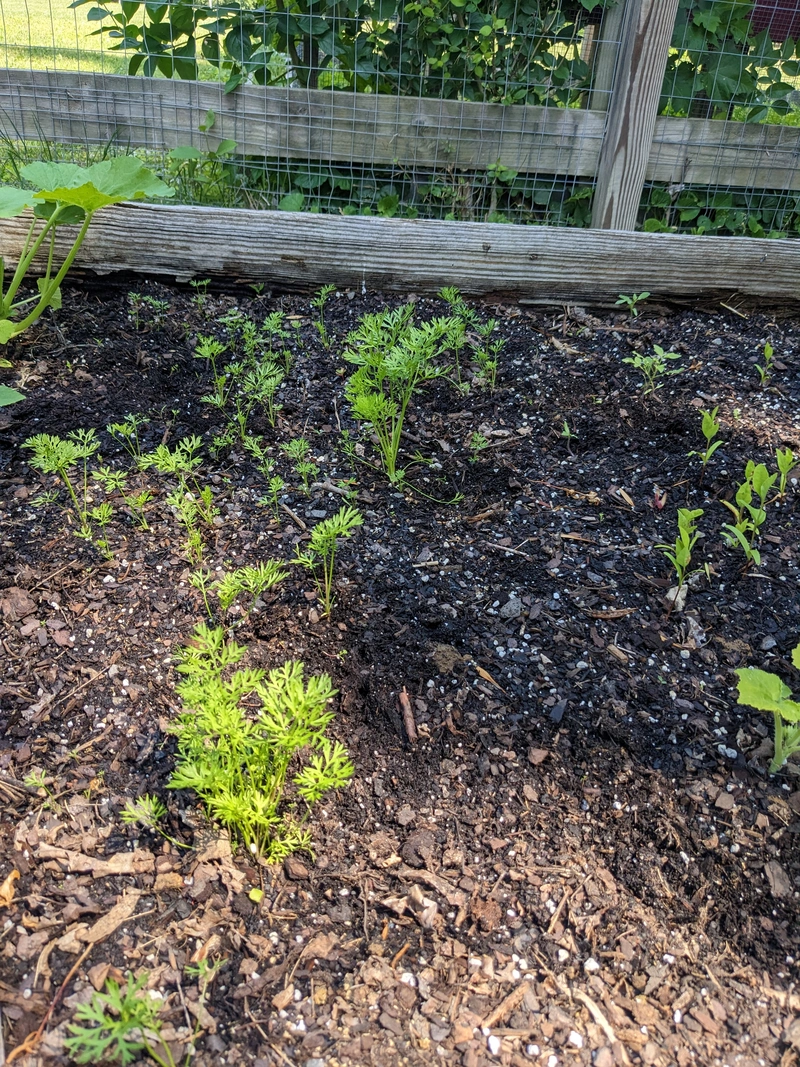
Some of the squash are flowering.
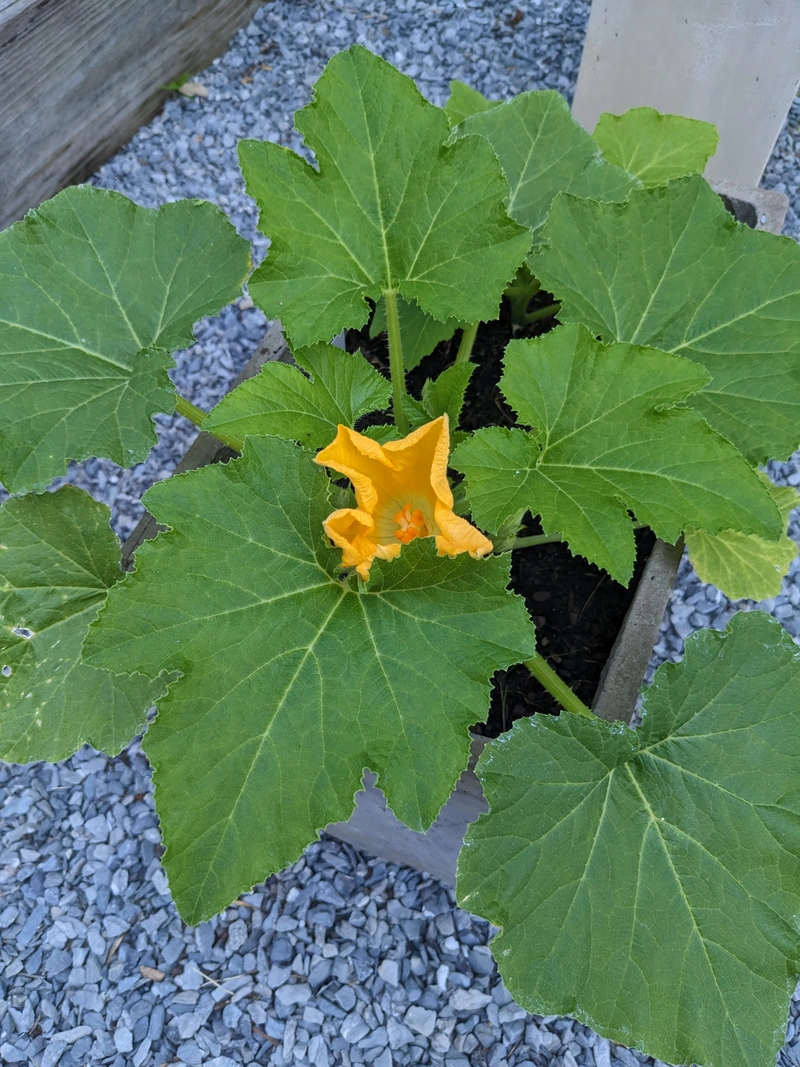
# 2023-06-25
First harvest of squash
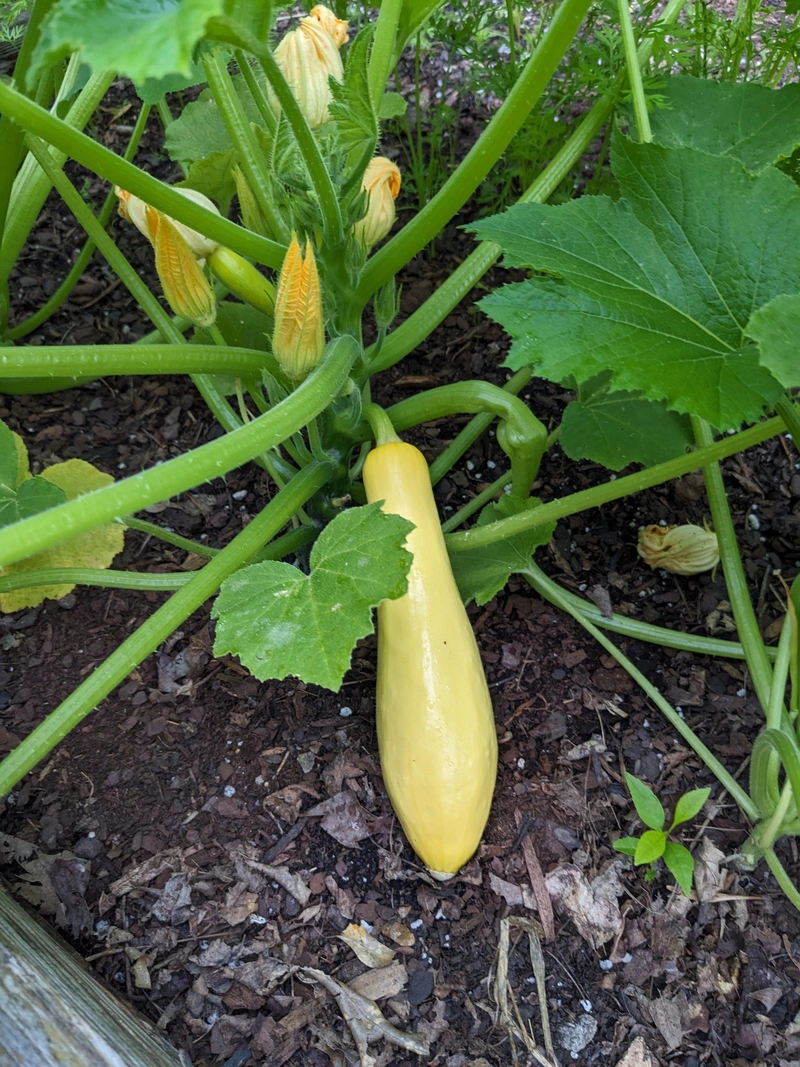
Tomatoes have been tied. Potatoes are growing in the black pot.
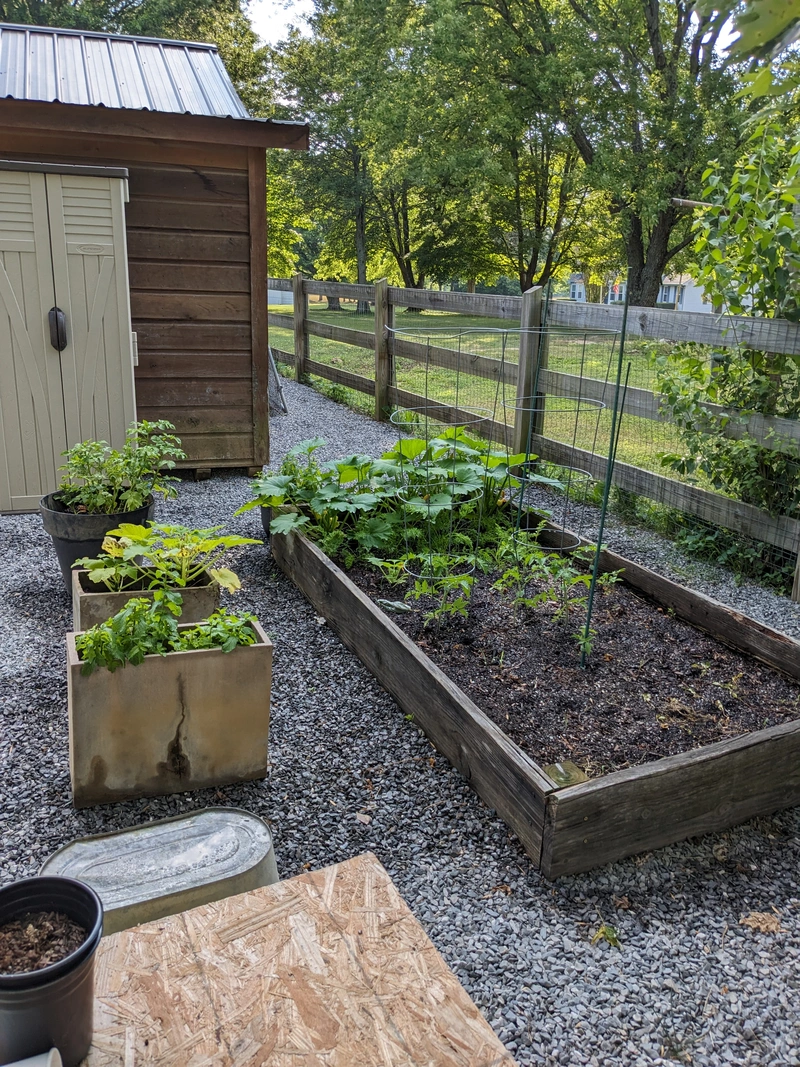
# Final update
- We had many zuchinnis and squash. They actually overwhelmed the carrots.
- We has many tomatoes still growing up to the first frost in early November
- Carrots where overwhelmed by the zuchinni and squash
- The onions did not grow